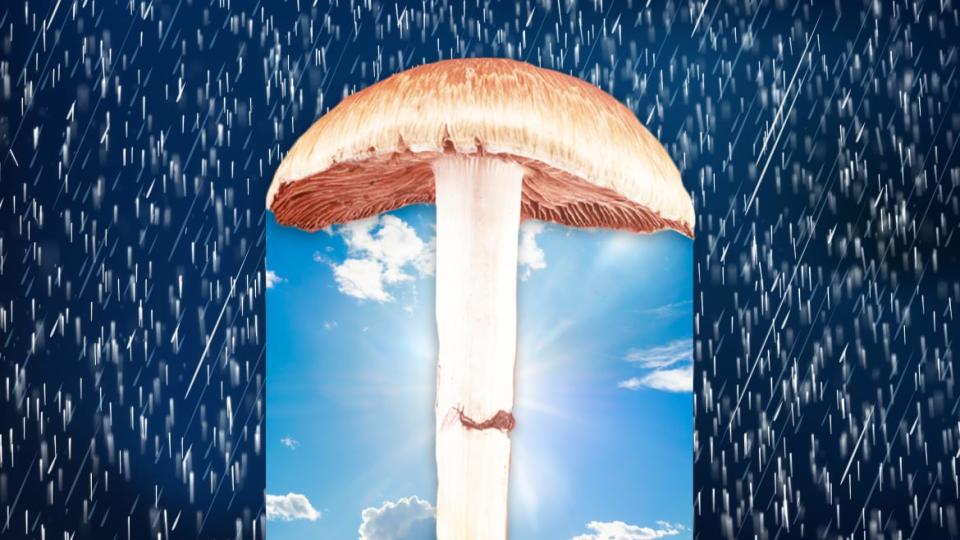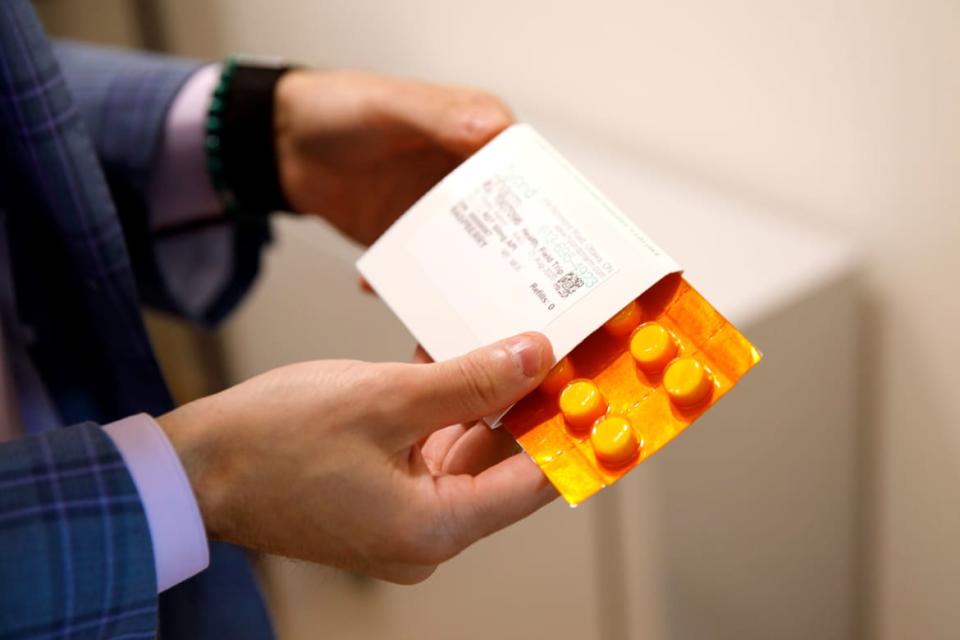Are Psychedelics the Next Big Treatment for Depression?

In 2019, the FDA made a groundbreaking decision to approve a form of ketamine as a clinical treatment for patients suffering from treatment-resistant depression, a condition which is estimated to affect nearly three million Americans. The drug, called Spravato, is the first psychedelic drug to be approved for the treatment of mental illness. This approval, along with large-scale clinical trials of LSD, MDMA, and psilocybin (the active component of magic mushrooms), marks a sea-change in the medical community’s perception of psychedelics: Instead of viewing them purely as drugs of abuse, many clinicians are now seeking to repurpose them as therapeutics.
So far, Spravato has been revolutionary for the field of psychiatry as a whole, in part because it seems to act very differently than other available antidepressants. This drug, Yale-New Haven Hospital Chief of Psychiatry John Krystal told The Daily Beast, “has caused us to question most of our prevailing assumptions about the treatment of depression.”
“All prior antidepressants needed weeks to months to produce meaningful clinical improvement, whereas ketamine produces clinical improvement rapidly, sometimes within hours of the first dose,” said Krystal.
Did Early Christians Use Psychedelics?
That’s brilliant news for people looking for relief. But there’s a confounding wrinkle to this early success: We don’t even really know how ketamine works to treat depression.
The mystery isn’t necessarily a deal-breaker for mental health medications. Lithium is one of the oldest medications used to treat bipolar disorder, and we still don’t fully understand what it does in the brain. But it is a problem if we want to make a better version of ketamine—one that can treat psychiatric disorders without causing users to fall into a K-hole or experience other unwanted side effects.
Even though ketamine is impressively effective at relieving symptoms of depression, it’s far from a perfect drug. Some users experience vivid hallucinations or become completely detached from reality. They may think they have died, or that one of their limbs is missing. They may feel as though they are falling into another dimension, or melting into the floor, or that their body is not their own. One participant in a 2015 study of ketamine reported that the world had become “spaghetti-like” and thought he was being brainwashed, à la A Clockwork Orange.
There can be unpleasant physical side effects too, like dizziness or vomiting. Doctors have also expressed concerns about the potential for abuse and withdrawal effects that may occur when patients stop taking the drug.
Finding out exactly how ketamine works might enable scientists to find or create a drug that mimics the antidepressant benefits without the nasty side effects.
So, what do we know so far? Ketamine was originally used in much higher doses as an anesthetic—it was FDA-approved for this use in 1970. Todd Gould, a neuropharmacologist at the University of Maryland, told The Daily Beast that the prevailing hypothesis is that ketamine reduces depression through the same mechanism as the anesthetic effects: by inhibiting a type of receptor in the brain called an NMDA receptor. It is thought that by blocking these receptors on neurons that produce the inhibitory neurotransmitter GABA, the drug actually removes inhibition in certain parts of the brain. Through a cascade of processes, this results in neurons forming new connections with each other, alleviating symptoms of depression.
While there’s no doubt that ketamine does stick to the NMDA receptor, some scientists, including Gould, think there’s more to the story. Other drugs that also inhibit this receptor don’t have the same strong, consistent antidepressant effects as ketamine.
Some scientists are still trying to figure out why ketamine and other NMDA receptor blockers have such different effects, but other researchers pursuing the depression-ketamine link have turned their attention elsewhere.
Gould, for example, thinks it might not be ketamine at all that’s treating depression, but rather one of ketamine’s metabolites. These metabolites are modified versions of ketamine, produced as the drug is processed by the liver in order to make it easier to purge ketamine out of the body.
In 2016, a research team led by Gould and Carlos Zarate Jr., a neurobiologist at the National Institute of Mental Health, found that one of these metabolites reduced depression-like behaviors in mice. The metabolite—called (2R,6R)-HNK—also appeared to have fewer negative side effects than ketamine. While it’s difficult to tell if a mouse is getting high or having a psychedelic experience, researchers found that whereas ketamine caused loss of coordination and abnormal responses to sensory stimuli in the mice, the metabolite did not.
But whether these results will translate to humans remains to be seen, as experiments in humans are only just getting started. The National Institute of Mental Health is currently conducting a Phase 1 clinical trial, meant to evaluate the safety of this metabolite in 48 healthy volunteers.
Krystal said the metabolite hypothesis is an interesting one, but he pointed to a study in humans that measured levels of (2R,6R)-HNK in human patients’ blood after they were given an infusion of ketamine. This study found that higher levels of (2R,6R)-HNK were actually associated with a decreased antidepressant response.
This is the exact opposite of what scientists expected to see. One explanation could be that the researchers measured the metabolite concentrations in the blood, which is much easier and safer than trying to obtain measurements from the fluid that bathes the central nervous system. However, it is unclear how well concentrations of this metabolite in the blood reflect levels in the brain, where mental health effects would actually be felt. Nevertheless, Gould, who was one of the researchers involved in the study, admitted that these findings are puzzling. Further research in humans is needed to figure out what’s going on.
Psychedelic Drugs Affect How the Brain Is Wired
While the initial mechanism of action remains somewhat controversial, Gould said that there is more agreement about the downstream effects of the drug. In general, scientists agree that, one way or another, ketamine activates a brain pathway called the mTOR pathway that helps neurons make and strengthen new connections with each other. Increased neuron connectivity might be what is actually responsible for antidepressant responses. Scientists at Yale University found some support for this when they blocked the mTOR pathway in animals and found that exposure to ketamine no longer resulted in new neuronal connections or antidepressant effects.
Some scientists think the mTOR pathway might be a good shortcut to improving mental health, potentially enabling us to jump-start the formation of new connections and alleviate depression without ketamine’s unpleasant side effects.

Dr. Michael Verbora the medical director of Field Trip, holds a blister pack of Ketamine lozenges at the psychedelic therapy clinic in Toronto, Ontario, Canada, on Aug. 28, 2020.
With this in mind, scientists at Yale and Navitor Pharmaceuticals recently developed a drug that activates the mTOR pathway. In rats at least, this drug seemed to mimic the effects of ketamine by increasing neuronal connections and producing antidepressant effects Even more promisingly, preliminary results from small Phase 1 studies in humans seem to indicate that this drug is relatively safe and effective at reducing symptoms of depression. A Phase 2 clinical trial of this mTOR activator, involving 400 people with treatment-resistant depression, is due to start this month.
This could be the beginning of a truly effective solution for treatment-resistant depression—one that avoids cumbersome surgeries and implants, and also avoids sending patients down a hallucinatory trip for hours on end. For Gould, pushing forward human clinical trials for these new drugs is of the utmost importance. “I can study this in mice until the cows come home,” he said. “But we aren’t trying to cure depression in mice.”
Got a tip? Send it to The Daily Beast here
Get our top stories in your inbox every day. Sign up now!
Daily Beast Membership: Beast Inside goes deeper on the stories that matter to you. Learn more.

 Yahoo Finance
Yahoo Finance 